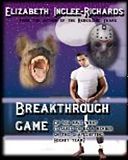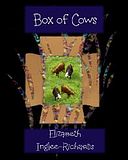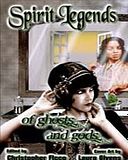There was a time When horses were cars.
Really, that is the way you should look at it. Tolkien did a good job with this, few of his horses were named and when they were it was an exceptional horse or pony. Anyway, some of us are good with our cars, getting new tires and oil changes and some of us aren’t. That is exactly the way people looked at the horses people used.
Not everyone owned a horse. You could get cabs and hire horses at livery stables. If you look at older cities you can see that they were designed for foot traffic. Horses are expensive and they take up space and they take food and care.
First off a little general info about horses.
Horses eat 3 to 5 % of their body weight in a day. Most of that should be roughage, grass hay and whatnot. A horse will drink between five and ten gallons of water a day. These can not be given after riding a horse hard, if you feed or water a horse that is hot there is a chance it will sicken and die.
If your horse dies on a quest you are kind of stuck.
After a hard ride your horses should be walked for a few minutes before you let them stop.
The four ‘natural’ gaits of the horse are:
Walk: a four beat flat footed gait.
Trot: a two beat flat footed gait where diagonal pairs of legs move together.
Canter: a three beat flat footed gait with one forefoot ‘leading’ or hitting the ground farther forward than the other front leg.
Gallop: a four beat flat footed gate. In this gate there is a moment when all four feet are off the ground. A horse gallops around thirty mph.
Other gaits: these gaits only appear in some breads or need special training:
Pace: a lateral two beat gait, the rider is rocked side to side the pace is generally faster than the trot and sires that are pacers breed truer than trotters so if your stud paces his babies will probably pace as well. This gate is natural in the Icelandic horse and the Standardbred (fast) and the Peruvian Paso (slow)
Ambling or single footed gaits:
This group of gaits are four beat gates where three feet are on the ground at the same time the gates can have equal beats or there can be a pause between one of hte beats, they can be lateral or diagonal. These gates are normally faster than a walk but slower than a canter, they are very comfortable for both horse and rider and can be maintained for a long time.
These gaits include the Fox Trot, Running Walk, Rack, Slowgate, paso fino, paso corto, and paso largo, paso llano sobreandando, marcha picada tölt and the revaal.
A horse can travel between 20 to 40 miles on roads, and about 10 to 30 miles off roads. A horse can be pushed for a day or two for things like the Tevis cup race of 100 miles in a day (winers are normally somewhere around 17 hours) and the 2,600 mile endurance race from Ashkabad to Moscow but many horses will be injured or even die in an attempt at either of those races.
Ages and Sexes: this is something huge numbers of writers get wrong.
Stallion: this is an adult intact male. Stallions can be very temperamental and aggressive but like anything each stallion is an individual.
Mare: an adult intact female. Mares can be temperamental, but that is normally limited to a few days a month.
Gelding: a neutered male horse. These guys are the most reliable of your riding horses.
Foal: this is a baby horse of either sex.
Weanling: a baby horse who is no longer nursing.
Yearling: a year old horse.
Colt: a colt is a male horse under two.
Filly: a female horse under two.
Sizes: Horse sizes are measured in hands from the withers. A hand is four inches and the wither is the point where the neck joins the back of the horse, it is normally the high point of the back but not always.
Pony: a pony is a horse under 14.2 hands (58 inches) or sometimes 14 hands (56 inches)this classification depends on the breed of the horse. The Icelandic Horse is always a horse it doesn’t matter what size. The Mongol Horse is a Horse and it doesn’t matter what size.
A note on the use of the word ‘Pony’ many horse people will use the word to note the horse that you are most bonded to. Sausage was my Pony and even though I work in the industry I have not met another ‘pony’. I don’t know if this use of pony is from ‘war pony’ or from peoples tendency to use diminutives.
Pony is also a verb to lead a horse while riding another and that other horse is called a Pony as well.
Horse: a horse over 14.2 hands (58 inches) or 14 hands (56 inches) at the wither. Also this is the species common name.
Cob: this is a type more than a size but size wise it is sort of an in-between animal. Cob can be a large pony or a small horse. They normally have large bodies with shorter thicker legs. The cob is suitable for riding, driving and work. You may have ponied your warhorse to a battle on your cob.
Next week we start on war horses and to be honest that may take a few weeks there are so many.
The English Great Horse
Another Great Black Horse
Baroque, its not just music






I saw an ad for a TV movie in which "girl tames a stallion." After that the horse is always referred to as "she." Given that the name of the horse means "girl" I doubt SHE is a Stallion.
ReplyDeleteThe "young female colt" has always sent me over the edge
DeleteLooks as though you have done your research! My only correction is that they are called gaits, not gates. :-) My second and third stories have horses in them. I've had the privilege of having horses in my life for fifty years, and I never stop learning about them. I hate to see movies about horses as usually get hurt, or are sad in some way. One of the happy ones is Secretariat. Very uplifting.
ReplyDeleteGlad you're providing this information for other writers, Elizabeth.
I can not believe that I did that! sigh*
DeleteI don't think that I have any fiction with horses in it, but it drives me nuts the way horses are often portrayed in fiction.
I have been working with horses for a little under 40 years and have a degree in animal science. Now I work in two living history museums.
Later this week I will be posting about The English Great Horse.